Rogue Audio’s Ninety Nine (Super) Magnum Preamplifier
|
|
|
99 miles to nirvana? |
|
|
|
|
 Mark O’Brien, president and founder of Rogue Audio, started the company in 1996, partly because he became frustrated with the direction of the high-end audio market at the time. In his view, O’Brien saw an increasing number of overpriced and underperforming components which started to cross over into the realm of luxury merchandise. The other reason for starting Rogue Audio was because at an early age, O’Brien was already designing and making his own audio gear, in particular designing amplifiers. All Rogue Audio components are currently designed and produced in a small factory in the Pocono Mountain area of eastern Pennsylvania. The Ninety Nine Magnum preamplifier is essentially an American audio component with a few of the parts sourced elsewhere (mainly Europe) while face plates are manufactured in Canada. Assembly, final testing and burn-in are performed by a dedicated small team that has been working in the company for years.
Mark O’Brien, president and founder of Rogue Audio, started the company in 1996, partly because he became frustrated with the direction of the high-end audio market at the time. In his view, O’Brien saw an increasing number of overpriced and underperforming components which started to cross over into the realm of luxury merchandise. The other reason for starting Rogue Audio was because at an early age, O’Brien was already designing and making his own audio gear, in particular designing amplifiers. All Rogue Audio components are currently designed and produced in a small factory in the Pocono Mountain area of eastern Pennsylvania. The Ninety Nine Magnum preamplifier is essentially an American audio component with a few of the parts sourced elsewhere (mainly Europe) while face plates are manufactured in Canada. Assembly, final testing and burn-in are performed by a dedicated small team that has been working in the company for years.
Several of my audiophile friends currently own Rogue Audio equipment and based on what I heard, either at their homes, or at high-end audio shows, I decided to review one of the company’s preamplifiers. After a recent visit to the factory and then hearing O’Brien’s reference system at his home (Hera II preamp and Apollo mono blocks), we discussed which model preamplifier I would review based on my sonic preferences and my proclivity towards value added components. He suggested the model Ninety Nine Magnum as a good bang for the buck unit. Ninety-nine is also the number of miles (as the raven flies, which is the Rogue Audio icon on their trademark) from my apartment to the company’s facility. [Okay, it’s actually about 97 miles but I couldn’t pass up the opportunity to associate the model number into this review].
The Ninety Nine preamplifier debut in 1999 and has been in continuous production since, with significant evolution throughout from its beginning to the present. I erroneously thought that the model derived its name from the year of its introduction, but O’Brien assured me he picked the name because it was a nice round number. It would have been more press worthy if my presumption was true. Hey O’Brien, I won’t tell if you won’t tell. That’s how some legends start, I may add.
Product Design and Features
In terms of appearance, the Ninety Nine Magnum is not a fancy looking design but neither is it a prosaic one. For my taste, the preamp is not as aesthetically beautiful as the Peachtree iNova with its Art Deco motif which I reviewed. Still, I think the 99 is very attractive in an understated way and exhibits a functionally clean look. Of course, beauty is in the eyes of the beholder so your assessment may deviate from mine. The most striking design feature is the shape of the half circle or half crescent moon encompassing the three knobs in the middle of the front fascia. All front buttons, knobs and switches have a quality look and solid feel, which competes with those of more costly components. For example, the selector knob or mute button requires some force to move past their resistance; unlike some flimsy knobs which offer no resistance and feels like you are pushing or turning air on some similarly price competitors. For this Magnum version O’Brien explains, “We use an Alps potentiometer and high grade parts throughout. This includes expensive silver switches, Mundorf Supreme capacitors and Vishay resistors to name a few.”
Size wise, at approximately 5¼” inches in height the unit is fairly tall for a fully enclosed preamp, because (I assume) O’Brien chose the dual triode 6SN7, a taller and more robust tube than the ubiquitous 12AX7, 12AU7, 6DJ8 or similar small signal tube that are used in most circuits of preamplifiers. Unit length (18”) and depth (14”) are fairly standard and the Ninety Nine should fit inside most cabinets without a problem. Weight is twenty plus pounds with the separate power supply. Overall, this is a very well built, heavy and solid component at any price, but especially at this price point.
Included in the price is a hefty metal remote control. Actually it’s a remote volume control, for that is its only function. During my audition period, I couldn’t quite get the ideal volume setting I wanted clicking the remote, so I ended up manually adjusting the volume to my satisfaction. While I prefer fairly simple remotes, I would like a mute function and source selector added as well. I would also like peace on earth and the American Congress to get its act together, but hey you can’t always get what you want as the Rolling Stones sang.
Also included is a separate large power supply which you can use to whack a home intruder in an emergency. You have to attach two cords from the power supply to the back of the unit. Since the cords have different types of connectors, be sure they are connected correctly. Do not try to jam the connector in the unit if it doesn’t seem to fit. It’s always wise to read the owner’s manual first or at least look to match the connector ends. I know I have been guilty of not doing so in the past, and well, we’ll leave it at that.
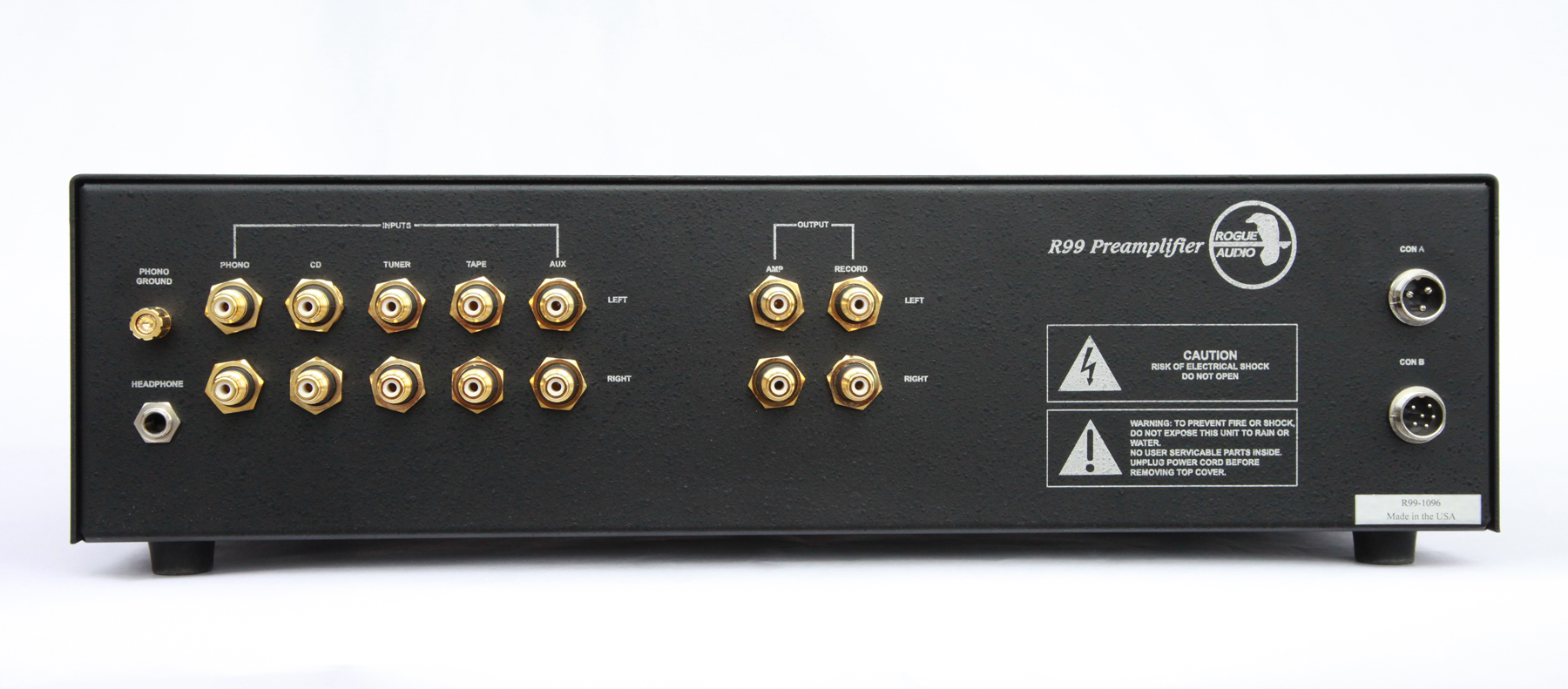
The Ninety Nine Magnum allows for up to five input sources. Connection of sources is on the back panel via RCA only, as there is no provision for balanced inputs. There are two output connections, one for a power amplifier, and the other for a tape recorder or a second power amplifier (mono blocks anyone?) or a subwoofer if two internal switches are moved from the passive (fixed) position to the active (variable) position. There is also a moveable lug for a phonograph grounding wire, and a headphone jack on the back of the unit. I would have preferred if the headphone jack were on the front panel instead, for convenience sake and for also allowing me to sit further away with the headphones on. All my headphones have fairly short cords and sitting so close doesn’t make me feel relaxed. When I listen to cans I do want to relax.
Besides the usual power, mute, source selector, and volume controls, there are also mono, record and adjustable gain controls on the front fascia. The adjustable gain is really a neat feature, and I would like to see that on more preamplifiers. On the Ninety Nine, there are five available gain settings, which span a fairly wide range to fine tune the volume required depending on your amplifier’s input impedance or sensitivity. I would also like to mention that this model employs inverted polarity. If the amplifier being use also inverts polarity then speaker connection follows normality. However, most amplifiers are non-inverting, in which case connect the positive (+) terminals of the amplifier to the negative (-) loudspeaker terminals for best sound. If one is not sure if he/she has an inverted or non-inverted amplifier just try the connections both ways and determine which method produces better or more focus sound.
I requested the line stage version for review ($2,595 retail) but the Ninety Nine Magnum could also be ordered with an optional all tube phono stage for those wishing to play the large (mostly) black discs for an additional 600 clams. Record lovers will be happy to know that the Ninety Nine’s chassis was designed to incorporate this optional phono section by providing space for it on the right side, so a separate chassis is not required. The phono input stage uses two 12AX7 tubes. The output section is designed for flexible use of MM or high output to medium output MC cartridges (either 12AU7 or 12AT7 tubes can be used, depending on amount of gain required), allowing for three adjustable gain levels to accommodate the many cartridge types available in the market. Owners of low output MC cartridges should contact the factory for compatibility questions.
If I decide or if someone kick’s my behind to get me motivated to start spinning LPs again, all I have to do is send my unit back to the factory and have the phono stage installed. That’s a pretty simple and painless option.
Okay, enough of this, let’s get to my favorite part of any audio review, listening to music!
Setup and Listening
In my previous four hundred reviews; okay you got me. In my previous four reviews, auditioning and listening were done in my 18’ ½” x 14’ ½” x 10’ living/listening room. What’s a couple of zeros anyway? For this review, I still had the use of the excellent Lindemann USB-DAC 24/124 for most of the time. Towards the end of the review I substituted my heavily modded ART DI/O DAC after I hesitantly sent back the Lindemann DAC to the importer. The Music Reference RM-10 tube amplifier (relatively neutral tonal balance) and AAD 2001 loudspeakers were mated with the Ninety Nine Magnum for the entire audition process.
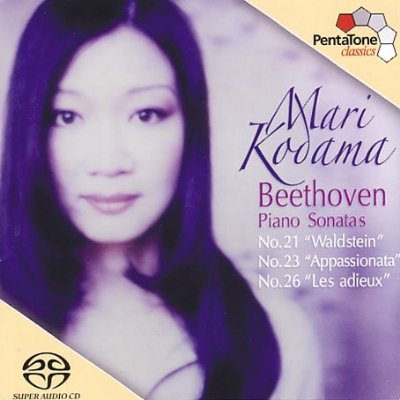 As usual I listened to several dozen CDs and some computer WAV music files during my audition period to arrive at a stable sonic conclusion. Right off the bat, I sense the Ninety Nine Magnum produces a very nice tonally balanced sonic presentation. The model also has a liquid vocal presence that good tube equipment is justly famous for and which can draw the listener into the performance. After listening to a number of CD albums, my conclusion is that instrumental harmonics are rich and accurate, for example with properly recorded piano performances. This is evident on the Beethoven Piano Sonatas, no. 21, 23 and 26, superbly performed by Mari Kodama [Pentatone]. The diminutive Ms Kodama exhibits a fluid, graceful and when required a forceful playing style that commands the listener’s attention. Listening to her rendition of Beethoven’s Piano Sonata no. 23 (Appassionata) on this well recorded hybrid SACD, I hear the striking of keys, the hammers hitting the strings and the resonance of the wood enclosure as I do at a live performance, creating a sense that I’m hearing a real piano. The dynamic range of this piece is greater than most other recordings I own, and the Ninety Nine is able to convey that admirably. From the softest pressing of Ms Kodama fingers to the most forceful striking on the keys, from the softest sounds to the loudest, the Ninety Nine handles the dynamic range with aplomb. This is a beautiful performance and the Ninety Nine Magnum, Music Reference and AAD 2001 combo is able to reproduce it very well.
As usual I listened to several dozen CDs and some computer WAV music files during my audition period to arrive at a stable sonic conclusion. Right off the bat, I sense the Ninety Nine Magnum produces a very nice tonally balanced sonic presentation. The model also has a liquid vocal presence that good tube equipment is justly famous for and which can draw the listener into the performance. After listening to a number of CD albums, my conclusion is that instrumental harmonics are rich and accurate, for example with properly recorded piano performances. This is evident on the Beethoven Piano Sonatas, no. 21, 23 and 26, superbly performed by Mari Kodama [Pentatone]. The diminutive Ms Kodama exhibits a fluid, graceful and when required a forceful playing style that commands the listener’s attention. Listening to her rendition of Beethoven’s Piano Sonata no. 23 (Appassionata) on this well recorded hybrid SACD, I hear the striking of keys, the hammers hitting the strings and the resonance of the wood enclosure as I do at a live performance, creating a sense that I’m hearing a real piano. The dynamic range of this piece is greater than most other recordings I own, and the Ninety Nine is able to convey that admirably. From the softest pressing of Ms Kodama fingers to the most forceful striking on the keys, from the softest sounds to the loudest, the Ninety Nine handles the dynamic range with aplomb. This is a beautiful performance and the Ninety Nine Magnum, Music Reference and AAD 2001 combo is able to reproduce it very well.
 To determine imaging I chose Laura Veirs’ Year of Meteors[Nonesuch]. This is an ambitious and adventurous album. Ms Veirs has a similar voice and delivery to that of Suzanne Vega but shows a wider musical taste in her song writing. Essentially it is a contemporary folk album but with electronic rock and alternative pop elements blended into the mix as well. On the track, “Fire Snakes” violins and whistling are heard far back of the stage from the other instruments. The image depth is close to the best I’ve heard in my room. Laura’s vocals are slightly recessed, that is a few inches behind the horizontal plane of my speakers, which is almost perfect for my taste. My AAD 2001 monitors are 26” inches away from the back wall to give the readers a reference. I didn’t hear any treble harshness on this recording with the Ninety Nine Magnum and RM 10 combo as I sometimes do with a lot of solid state and a few tube components. I prefer smooth treble notes even if slightly attenuated than more extended strident ones. Indeed, cymbals and violins for example, had the appropriate clang and silky smooth tones that I hear at concerts.
To determine imaging I chose Laura Veirs’ Year of Meteors[Nonesuch]. This is an ambitious and adventurous album. Ms Veirs has a similar voice and delivery to that of Suzanne Vega but shows a wider musical taste in her song writing. Essentially it is a contemporary folk album but with electronic rock and alternative pop elements blended into the mix as well. On the track, “Fire Snakes” violins and whistling are heard far back of the stage from the other instruments. The image depth is close to the best I’ve heard in my room. Laura’s vocals are slightly recessed, that is a few inches behind the horizontal plane of my speakers, which is almost perfect for my taste. My AAD 2001 monitors are 26” inches away from the back wall to give the readers a reference. I didn’t hear any treble harshness on this recording with the Ninety Nine Magnum and RM 10 combo as I sometimes do with a lot of solid state and a few tube components. I prefer smooth treble notes even if slightly attenuated than more extended strident ones. Indeed, cymbals and violins for example, had the appropriate clang and silky smooth tones that I hear at concerts.
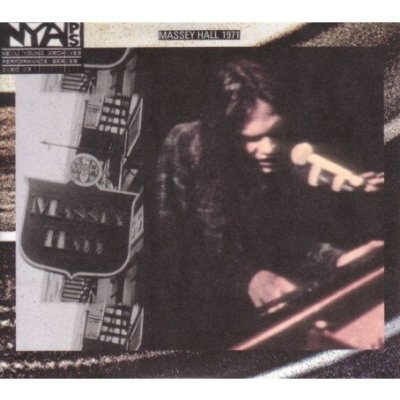 Neil Young’s Live at Massey Hall 1971 [Reprise] is one of the most natural and transparent recording in my music collection. The recording engineer did a superb job capturing the ambience of Massey Hall as well as achieving just the right tonal balance, not too warm and not too bright said Goldilocks. Or was she referring to the temperature of porridge? On “Love in Mind,” Neil is very present in my listening room; with a good degree of transparency. Depending on the equipment used in the past, I’ve been transported to Massey Hall a few times. This happens when there is sufficient presence of ambient cues of the recorded venue. The Ninety Nine and Music Reference combo doesn’t quite do that but it’s close. Image size is just about right, neither gigantic nor pint size like Ron Mueck sculptures. If you’re not familiar with his art, please google him. I think he’s an exceptional realist artist.
Neil Young’s Live at Massey Hall 1971 [Reprise] is one of the most natural and transparent recording in my music collection. The recording engineer did a superb job capturing the ambience of Massey Hall as well as achieving just the right tonal balance, not too warm and not too bright said Goldilocks. Or was she referring to the temperature of porridge? On “Love in Mind,” Neil is very present in my listening room; with a good degree of transparency. Depending on the equipment used in the past, I’ve been transported to Massey Hall a few times. This happens when there is sufficient presence of ambient cues of the recorded venue. The Ninety Nine and Music Reference combo doesn’t quite do that but it’s close. Image size is just about right, neither gigantic nor pint size like Ron Mueck sculptures. If you’re not familiar with his art, please google him. I think he’s an exceptional realist artist.
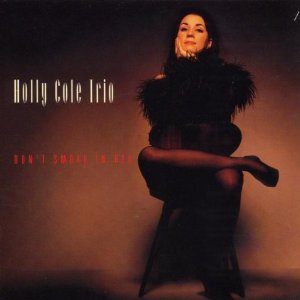 Bass notes are taut, impactful and articulate on good recordings, such as Holly Cole Trio’s Don’t Smoke in Bed [Blue Note Records]. On the track “I Can See Clearly Now” Ms Cole’s vocals exhibited natural sibilance and not the bucketfuls of spit I’ve heard numerous times on equipment which accentuates the upper mid-range region. That type of equipment sometimes also exhibits leanness as if there’s hardly any meat to the sound. Not so in this case, the piano had the appropriate weight and overtones of a real piano. Pace, rhythm and timing (PRaT) is excellent.
Bass notes are taut, impactful and articulate on good recordings, such as Holly Cole Trio’s Don’t Smoke in Bed [Blue Note Records]. On the track “I Can See Clearly Now” Ms Cole’s vocals exhibited natural sibilance and not the bucketfuls of spit I’ve heard numerous times on equipment which accentuates the upper mid-range region. That type of equipment sometimes also exhibits leanness as if there’s hardly any meat to the sound. Not so in this case, the piano had the appropriate weight and overtones of a real piano. Pace, rhythm and timing (PRaT) is excellent.
The computer WAV files I played sounded slightly better than their CD versions when I A/B them. Computer audio is the way to go for me in the near future, except I’m not looking forward to transferring all my CDs onto a dedicated music server, which is very time consuming.
The Ninety Nine Magnum has an ability to render very good detail and resolution in a natural manner, without spot lighting attention to those sonic characteristics, or by etching notes or vocal outlines unless it’s in a bad recording. This is a relatively neutral sounding preamplifier, neither approaching the romantic appeal of vintage tube equipment nor sounding like the typical sterile solid state preamplifier either. Compressed, thin or bright recordings will be revealed by the Ninety Nine Magnum in most of its ugly truth, while good recordings will shine in almost all its glory. That is, provided the associated equipment is also up to the task. Because the Ninety Nine doesn’t seem to emphasize the upper mid-range/lower treble region, even bad recordings are listenable for the most part, though you might not enjoy them as much as in a less revealing preamplifier.
With O’Brien’s permission I substituted the stock Chinese 6SN7 tubes with RCA and Raytheon vintage brands towards the end of my review audition. Each brand gave a different sonic presentation from each other as well as from the stock tubes. The RCAs provided the Ninety Nine Magnum with the warmest tonality but also added a veil, thus reducing transparency. This was not the case with the Raytheons which was relatively neutral but gave a very insightful sonic presentation. I found instrumental timbres almost jump out of the speakers, while vocal presence was especially strong. The stock Chinese tubes’ sound sort of fell in between the two in tonal balance and vividness. They also exhibited a slight hardness with vocals on a couple of recordings, but for the most part the stock tubes were a good all around performer.
Summary
This is a very capable high end performer for its price. Is the Rogue Audio Ninety Nine Magnum a perfect audio component? No, as you can read by my minor criticisms above. There may be a perfect component for a certain individual; but I haven’t as yet discovered a perfect audio component for all personal tastes and for all applications. Besides, almost all audiophiles I know do not have a perfect room for acoustical playback either. For those listeners desiring a lush and thick vintage tube sound this is not your baby. The Ninety Nine Magnum is fairly neutral tonally, but provides tube harmonics that solid state preamplifiers do not. What the Ninety Nine Magnum does do is to never fail in delivering a musically satisfying experience throughout my audition period. When compared to the very best sounding preamplifiers I’ve heard including Rogue Audio’s own Hera II (admittedly all of them costing thousands more), the Ninety Nine Magnum’s sound is pretty close. Since I’m not anywhere near the 1% of income earners, the 99 Magnum provides very good value for the cost. I highly recommend this preamplifier for audition. Until next time, I wish you happy listening.
LATE BREAKING NEWS: While I was in the middle of writing this review, O’Brien informed me that there is a new “Super Magnum” version available, the latest evolution of the model, and did I want to give a listen? Can birds sing? As soon as I finished my audition period I returned the 99 for the upgrade, and received the Super Magnum version replete with an upgraded power supply, Cardas output wiring, PRP resistors, blah, blah, blah. If you want to find out all the upgrade goodies just go to their website and click on the “News” section.
Out of the box, I was not enjoying what I was hearing with the upgrade. Vocals were harsh and a veil was covering every song I played, thus reducing transparency to a foggy mist. I decided to burn-in the new parts for a few days in my bedroom system at low volume before listening again. When I reconnected the Super Magnum back to my main system, a transformation had taken place. The veil was lifted and vocals were smooth again. So what’s different with the upgrade? Did Superman become Super Duperman? No, not really. The upgrade merely made a very good sounding preamp a better sounding preamp. How better you asked? Well, I noticed there was a slight improvement in resolution and transparency to the already very good vocal presence region. Presence was more “there.” Vocal inflections and emotional expressions thus became clearer. Instruments had better separation and were more distinguishable from each other. The dynamic range became a little wider. There was a better overall coherent sound. None of the improvements were night and day, but a little more of this and a little more of that made Paul a happier listener. The result is a more refined sound. All in all, the improvements got me closer to sonic nirvana, closer to the best I’ve heard. Now I can get almost the same sound quality that the super wealthy has at a middle class price. That’s good enough for me. I bought the review unit.

![]()
Specifications: Please visit company website:
www.Rogueaudio.com
Price:
$2,595 Ninety Nine Magnum line stage
$2,995 Ninety Nine Super Magnum line stage
$600 optional phono stage
$525 Super Magnum upgrade for Magnum owners
Address:
Rogue Audio Inc.
PO box 1076
3 Marian Lane
Brodheadsville, PA 18322
Telephone: 570-992-9901
|
|
|||
| Associated Equipment: | |||
| Digital Front End | |||
| Lindemann USB-DAC 24/192
Heavily modified ART DI/O (24 bit/96 kHz, 128x oversampling) DAC OPPO DV-981HD Universal Disc Player (used as a CD transport) Computer Sony Vaio Laptop |
|||
| Amplification | |||
| Music Reference RM-10 tube stereo amplifier | |||
| Loudspeakers | |||
| AAD 2001 | |||
| Cabling | |||
| Audio Sensibility Testament Audio Sensibility Statement RCA interconnects Audio Sensibility Impact USB cable Monster Cable USB 2.0 |
|||
| AC Conditioners | |||
|
Stereo Times Masthead
Publisher/Founder
Clement Perry
Editor
Dave Thomas
Senior Editors
Frank Alles, Mike Girardi, Russell Lichter, Terry London, Moreno Mitchell, Paul Szabady, Bill Wells, Mike Wright, and Stephen Yan,
Current Contributors
David Abramson, Tim Barrall, Dave Allison, Ron Cook, Lewis Dardick, John Hoffman, Dan Secula, Don Shaulis, Greg Simmons, Eric Teh, Greg Voth, Richard Willie, Ed Van Winkle, Rob Dockery, Richard Doron, and Daveed Turek
Site Management Clement Perry
Ad Designer: Martin Perry





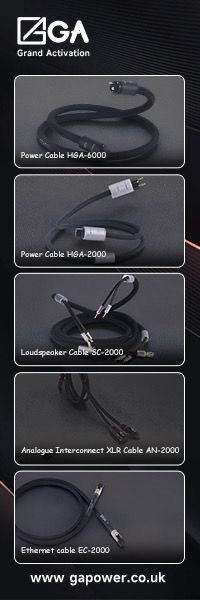
Be the first to comment on: Rogue Audio’s Ninety Nine (Super) Magnum Preamplifier